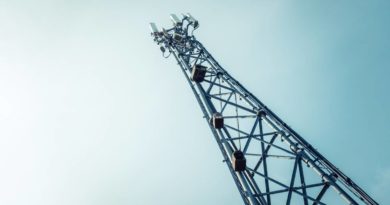How anti-5G anger sparked a wave of arson attacks
Hanna Linderstål wanted to see how deep the rabbit hole of anti-5G theories would go.
The Stockholm-based researcher had been studying online groups opposed to the new technology for years. Then she watched as the movement reached a tipping point earlier this year amid the coronavirus outbreak — spilling into criminality with a spate of arson attacks against telecom masts.
In the space of just a couple of weeks, more than 60 masts have been hit by arson attacks in the U.K. It prompted Boris Johnson’s office to condemn the attacks as caused by a “crazed conspiracy theory” and “putting lives at risk.”
On the Continent, the Netherlands is the hardest-hit country with 22 arson attacks and three attempted attacks linked to 5G concerns. Ireland has seen three such attacks, Cyprus has seen two and Belgium, Italy, Sweden and Finland have all seen at least one, recent figures from industry associations ETNO and GSMA showed.
The outrage behind these attacks — fear that 5G radiation causes health problems — has been bubbling away on the internet ever since the technology became viable.
“Everybody is really scared. Everybody is an easy target” — Hanna Linderstål, Stockholm-based researcher
But it was only this year, when anti-5G groups started spreading rumors that the technology had caused the coronavirus outbreak, that things turned ugly.
Online ravings escalated into physical harassment of telecom engineers and torchings of “base station” sites of antennas — masts and internet connections worth hundreds of thousands of euros.
“People see these clips and they get angry,” Linderstål said in a video call. “Everybody is really scared. Everybody is an easy target.”
For Linderstål, the disinformation and conspiracies surrounding 5G have been around for years. She co-founded a boutique intelligence firm called Earhart that’s been tracking misinformation on 5G since 2018 on social media platforms like Twitter, Facebook, YouTube and, more recently, the booming video-sharing app TikTok.
Her firm tracks groups ranging from environmentalists concerned about the ecological impact of 5G to online channels devoted purely to misinformation and nonsense.
“Half of the clips feature people that claim to be doctors and scientists, and half of the clips are people filming cell towers next to dead birds and so on,” Linderstål said.
The creators “are really good at presenting the information. They make a compelling narrative. It’s like a good movie clip,” she added.
Anti-5G warriors switch gears
Opposition to 5G started with environmental and other groups raising concerns about health. It echoed earlier movements going back to the rollout of 3G and 4G networks warning of long-term effects of radiation on the human body.
Little evidence exists linking cell phone radiation to health problems, the World Health Organization underlines in its evaluation: “To date, and after much research performed, no adverse health effect has been causally linked with exposure to wireless technologies,” it said, adding that “so far, only a few studies have been carried out at the frequencies to be used by 5G.”
The absence of long-term studies has fueled community opposition to mobile phone system infrastructure such as antenna towers.
The opposition has largely coalesced around Stop 5G groups on social media, which successfully pushed some authorities to start investigating health effects from the technology. In France, the health authority launched an inquiry in January. In Brussels, home of the EU’s main institutions, the local government imposed environmental limits making it effectively impossible for operators to roll out 5G.

Anti-5G activists focused on health and environmental concerns | Justin Tallis/AFP via Getty Images
While those groups started a debate, they also laid the groundwork for 5G coronavirus conspiracy theories, which ultimately led to people torching masts.
“There’s been a discussion and very extensive research on this. There have been unfounded concerns being expressed by segments of society for some time … What you saw with corona is an increase of misinformation [including] the idea that coronavirus exists because of 5G, that it is a direct effect of 5G,” said Joakim Reiter, external affairs director for Vodafone Group.
“It became so ludicrous and yet it traveled so quickly,” Reiter said.
Tech giants have taken action in past weeks to slow down the sharing of conspiracy theories. WhatsApp, owned by Facebook, limited how users can forward messages to large groups of people. YouTube, owned by Google, this week expanded its fact-checking program, citing concerns of coronavirus misinformation as a key reason. Facebook expanded its work with fact-checking organizations in April.
The World Health Organization now lists 5G at the top of its coronavirus mythbusters page to help fight misinformation during the pandemic.
Still, telecoms executives warned anti-5G groups continued to thrive during the pandemic.
In Bulgaria, the Stop 5G groups used the pandemic to mobilize people against the new technology, according to Janet Zaharieva, chief regulatory adviser for local operator Vivacom.
“They misused what happened with the coronavirus and used the coronavirus as an accelerator for them, to attract new followers,” she said.
In Sweden, where there has been one arson incident, small local protest groups have also seized the momentum.
“Now they try to tag [the pushback] onto the international discussion on corona,” said Tommy Ljunggren of Sweden’s main IT and telecoms industry association IT&Telekomföretagen.
Beyond the older anti-5G online groups, researchers warned that others are misusing widespread public fear of coronavirus to boost the spread of 5G conspiracies.

Facebook has become a popular platform for spreading misinformation about 5G and the coronavirus | Olivier Douliery/AFP via Getty Images
“Some of [the activity] is typical behavior of trolls trying to make money out of clicks. They choose a topic that is very popular,” said Linderstål.
Case in point: In late January, an invite-only Facebook group called “Coronavirus the real truth” was set up and quickly descended into spreading falsehoods and rumors about the global pandemic. Yet by late April, when almost 600 people had signed up, the group abruptly changed its name to “5G the real truth,” and began spreading the theories linking COVID-19 to 5G, according to a review of these social media posts by POLITICO.
Authorities try to push back
As the attacks gathered pace, telecoms industry groups took an interest in the work of Linderstål’s Earhart, and other people who have been researching 5G-related conspiracy theories. Industry association GSMA has used the findings to alert authorities and global health officials to the danger of more attacks.
The World Health Organization now lists 5G at the top of its coronavirus mythbusters page to help fight misinformation during the pandemic, and the European Commission says on its website that “there is no connection between 5G and COVID-19,” and cites “no evidence that 5G is harmful to people’s health.”
But the official dismissal of the claims has so far failed to stop the spread of the disinformation, telecom industry officials warned.
“We must stop disinformation linking 5G to COVID-19 from harming our critical communications networks and frontline engineers when we need them most,” GSMA and its local European association ETNO said in a joint emailed statement.
The Stop 5G groups have bombarded local mayoral offices with letters warning of alleged health risks, including linking the technology to outbreaks of coronavirus.
Zaharieva, of Bulgaria’s Vivacom, said her company is concerned with local political resistance against the next-generation networks. The Stop 5G groups have bombarded local mayoral offices with letters warning of alleged health risks, including linking the technology to outbreaks of coronavirus in Wuhan, China and in the north of Italy.
“Local authorities provide the permits for base stations,” she said, adding that operators fear local politicians could halt the rollout of new networks due to fears that it would harm them politically.
Linderstål, the disinformation researcher, said governments should get down to the level of the local protest groups on social media in order to counter the falsehoods.
“You have to publish information in the channels where these conversations are happening,” she said. “You can’t publish your response in the papers, you have to engage in the channel where kids are reading it.”
Mark Scott contributed reporting.
Want more analysis from POLITICO? POLITICO Pro is our premium intelligence service for professionals. From financial services to trade, technology, cybersecurity and more, Pro delivers real time intelligence, deep insight and breaking scoops you need to keep one step ahead. Email [email protected] to request a complimentary trial.
Also On POLITICO
*** This article has been archived for your research. The original version from POLITICO.eu can be found here ***


